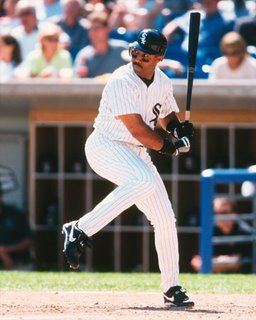Hitting A Baseball

There is no doubt that hitting a baseball is a very difficult athletic skill. Last night I was listening to Joe Morgan babble on about hitting and it triggered a flash back to my years working in pro baseball with the White Sox and the Mets. I agree hitting is difficult, is was, it is and it always will be my contention that that the methodology of teaching and coaching hitting is 90% of the problem. I am taking a big leap of faith by calling it methodology. It is surrounded by gurus, poor teaching and fundamentally unsound training. In other words most hitting coaches set their hitters up for failure. They actually tell the hitters that! The standard line is that Ty Cobb one of the greatest hitters of all time failed six out of ten times at bat! My retort is so what and why didn‘t he hit six out of ten. You can imagine how popular I was with the hitting coaches.
I have some ideas based on things that I have seen:
No fear – If you are afraid of the ball you can’t hit. This is tough to overcome. One of the reasons aside from steroids for the homerun barrage of the nineties is the amour the hitters are wearing. They have taken away some of the fear of getting hit by the inside pitch.
Vision – This is the key and it also can be trained. The key is to establish a stable base for the head so the eyes are still in order to effectively track the ball. The head must be still!
Biomechanics – It is a sequential kinetic chain striking activity that starts from the ground up
Hand/Eye Coordination – This is essential and it can be improved
Body Awareness – Must develop a good feeling for the position of the hips in relation to the feet and the separation of the hands from the body.
Practice Organization – It is not more swings, it is quality swings. 100 swings at a time will ingrain bad habits. Ten quality swings, some balance work for recovery followed by ten more swings is much better than twenty swings. This is not Vern Gambetta’s opinion this is sound motor learning.
Specificity – Batting practice occurs at about sixty to sixty five miles per hour. Seldom does a hitter see a breaking ball in batting practice. I have never been able to understand how this transfers. One American MVP actually walked out of the batting cage because the batting practice pitcher was throwing too fast! Soft toss is the other staple of hitting coaches. This is even dumber than batting practice. There has to be a better way
Balance – Dynamic to set up a stable platform to allow the eyes to track the ball
Strength – Leg and core strength establish the base. Rotational strength is the key, med ball work is more important than bench press. It is not hand and wrist strength, they are the last links in the chain to be involved.
I will be interested in your comments.


2 Comments:
Our best hitter, who is also our best relief pitcher, leading base stealer and starting center fielder, received a comminuted fracture of his ulna via an inside fastball.
What are your thoughts on the SPORTSVISION program?
Having played college baseball, been trained by a hitting instructor, and read and studied the theorys of many of MLB's greatest hitters I have to disagree with you somewhat on the aspect of failure. The likes of Ted William's, Wade Boggs, Don Mattingly, Tony Gwynn, and Kirby Puckett all believed they could hit anything. The goals taught to me were to be aggressive at the plate, pick out your pitch and attack the ball, fear wasn't even a thought or an option (and I was beaned like Don Baylor...it only hurts for a little while!). I always thought I should be at least 3 for 5 every day and at minimum put good wood on the ball 5 times.
You are spot on about the rest, except for soft toss, but more about that later. I agree that too much emphasis is spent on time in the cage, lack of biomechanic focus during reps, although hitters think about it and watch tapes to recognize it all all the time, but only make small adjustments rather than practicing the dynamics of the swing. Work for strength and balance is changing (look at what the core work by Clemens and Garciapara did for their careers) but it is definately slow to progress into the sport.
Now to soft toss. It definately focuses on quick recognition, quick hands, and getting the hands in the proper position. It always helped myself and other get out of habits that you tend to slip into. You are correct in that there are probably better ways to accomplish this, especially if better organization and specifity were used in practice to train swing biomechanics.
Post a Comment
<< Home